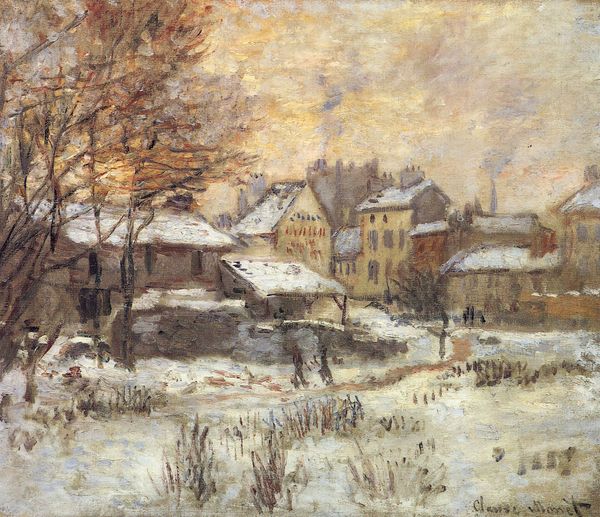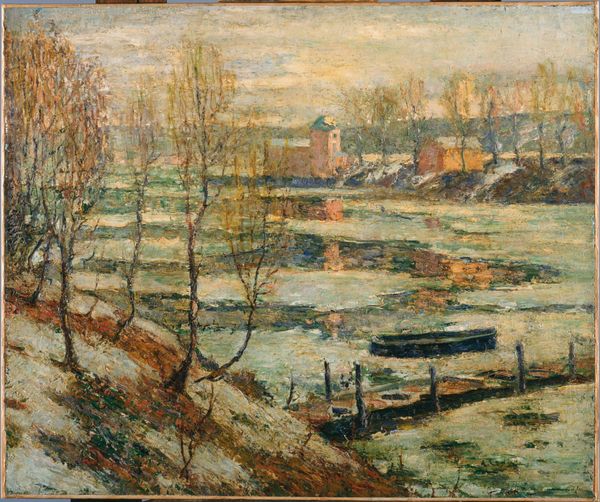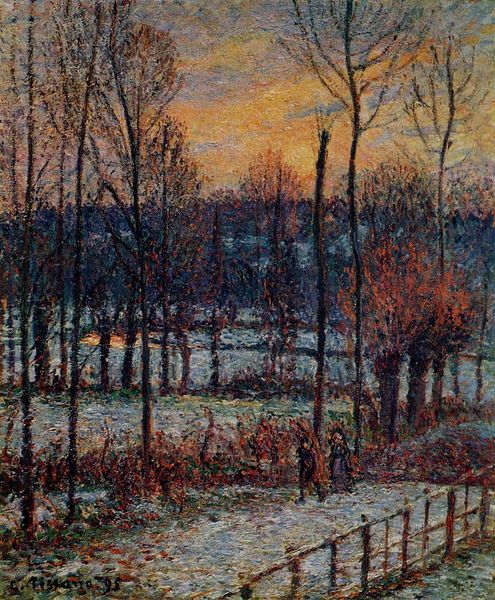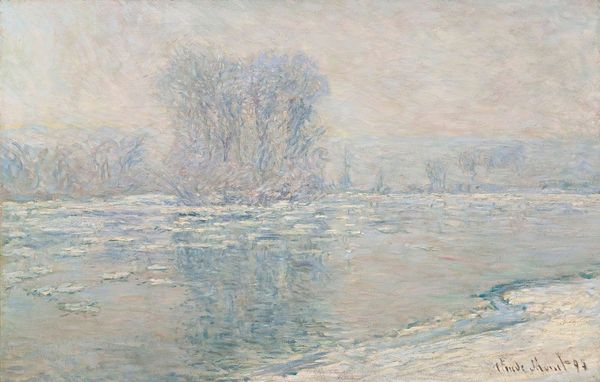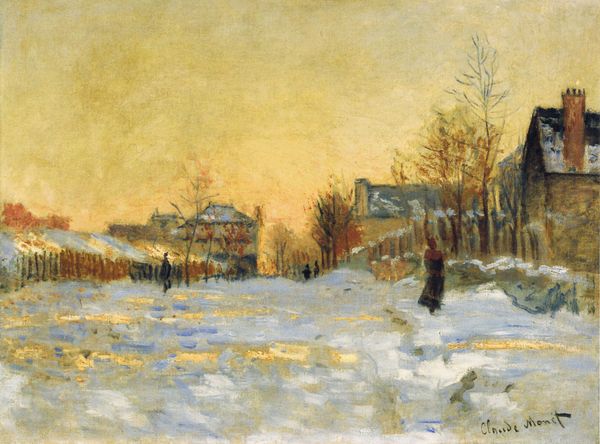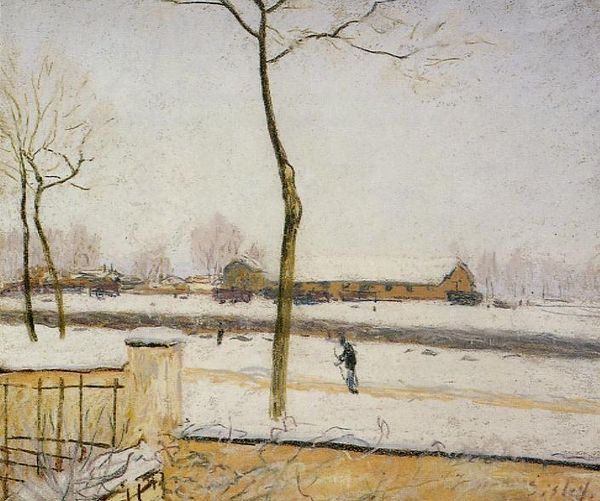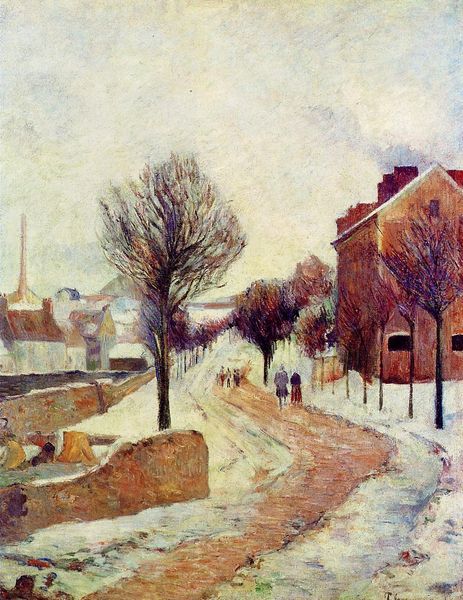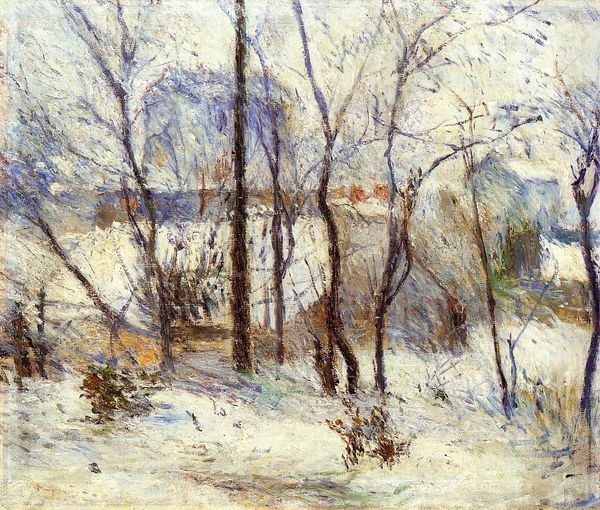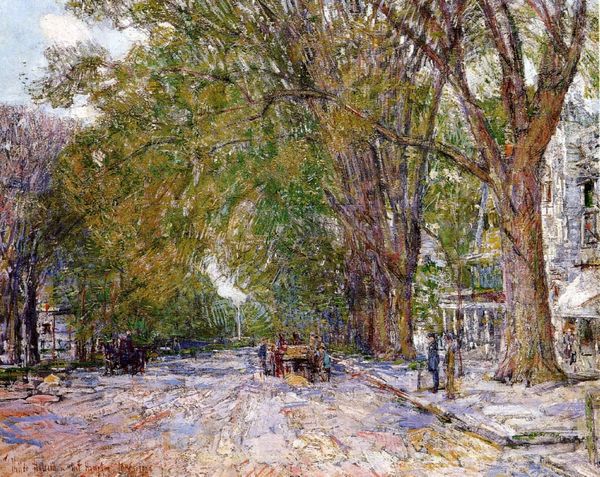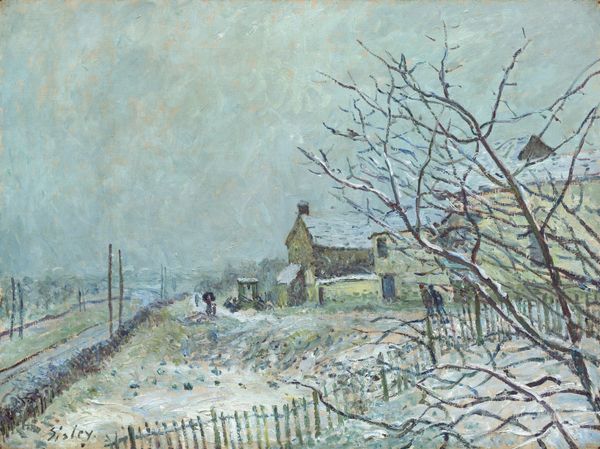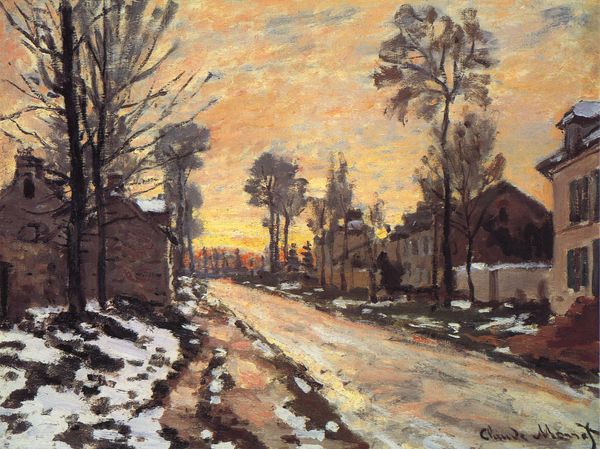
painting, oil-paint
painting
oil-paint
landscape
impressionist landscape
oil painting
ashcan-school
cityscape
post-impressionism
Dimensions: 50.8 x 61 cm
Copyright: Public domain
Curator: Looking at this scene, I am immediately struck by a pervading sense of tranquility, despite the urban environment. The muted palette and the soft light suggest a moment of quietude just before the reawakening of spring. Editor: Indeed. What we have before us is a work by Ernest Lawson entitled "Melting Snow. Early Spring." While the exact date of creation remains unconfirmed, its association with the Ashcan School places it within a fascinating socio-historical context. These artists sought to capture the everyday life of the city, often focusing on scenes considered unrefined by academic standards. Curator: The composition itself is quite masterful. Notice how the horizontal flow of the river is counterbalanced by the verticality of the trees and the architectural forms. The brushstrokes are quite visible, applied with a certain freedom that captures the fleeting quality of light reflecting off water and melting snow. Editor: And that aesthetic decision—the loose brushwork—places Lawson firmly within the Post-Impressionist movement. There’s an embrace of subjective perception. The focus shifts from objective representation towards a more personal and emotional engagement with the scene. It really champions this particular area that, at the time, wouldn't have been regarded highly by the upper-class echelons of society. Curator: Precisely. And yet, by elevating these scenes to the realm of art, the Ashcan artists conferred a certain dignity and beauty upon them. This reminds me that one shouldn't underestimate the symbolism of the architecture included. Lawson deliberately depicts these as abodes in harmony with a flowing river, perhaps symbolising his artistic dedication. Editor: I wonder, could the painting itself, as a material object and then displayed in public museums and private collections, act as an interesting conduit between nature and city. Perhaps even hinting at environmental discourse, during times where it had been increasingly overshadowed. Curator: A compelling reading. I appreciate how it compels a reimagining of form, a reminder of what’s at stake for all people with their cultural inheritance. Editor: And perhaps to appreciate art not merely as objects but historical testaments, engaging with contemporary socio-political realities.
Comments
No comments
Be the first to comment and join the conversation on the ultimate creative platform.
